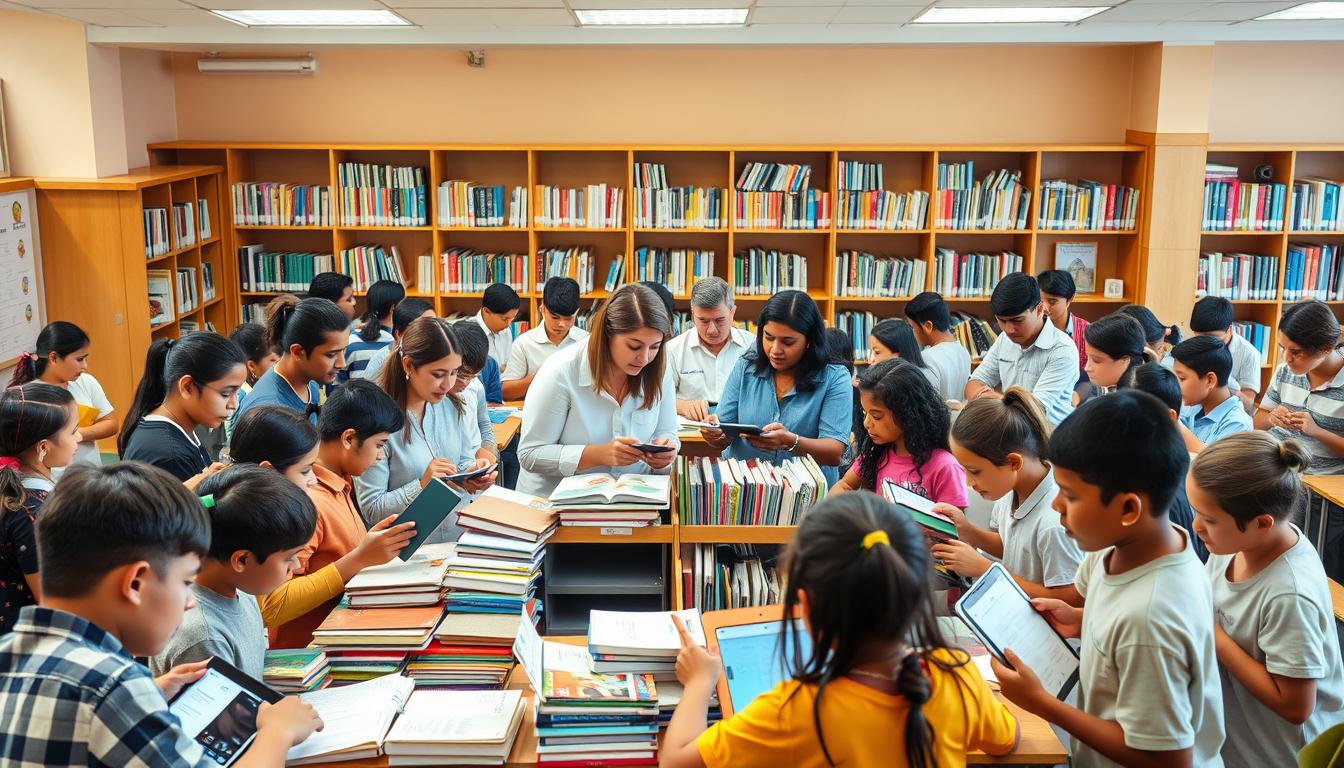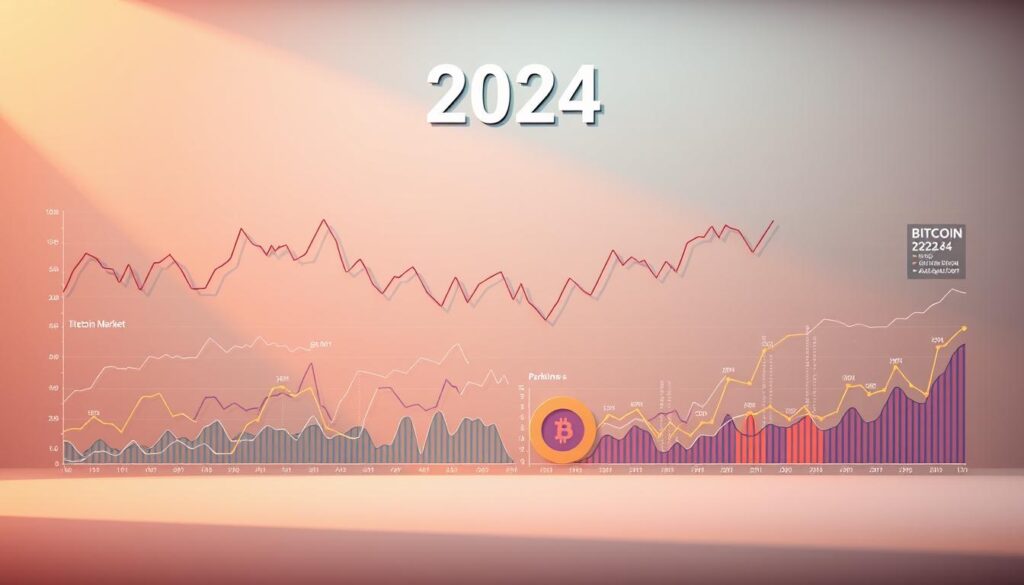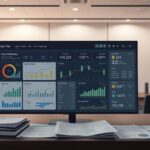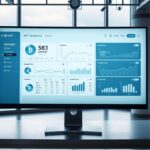Now Reading: Learn Educational Content: Step-by-Step How-to Guide
- 01
Learn Educational Content: Step-by-Step How-to Guide
Learn Educational Content: Step-by-Step How-to Guide
Creating effective educational content is key to keeping learners interested and reaching educational goals. With more people learning online, the need for top-notch educational materials has grown a lot.

In this guide, we’ll show you how to make compelling educational content for all kinds of learners. Our step-by-step guide will cover the important parts of making online learning resources that teach and entertain.
Key Takeaways
- Understand the importance of educational content in online learning.
- Learn how to develop a step-by-step guide for creating educational content.
- Discover the key elements of effective online learning resources.
- Explore strategies for engaging learners through educational content.
- Gain insights into assessing the quality of educational content.
Understanding the Value of Educational Content
The world of education is always changing. This makes the importance of good educational content clear. The quality of educational resources greatly affects how we learn. It’s key to know what makes educational content effective.
What Defines Quality Educational Content
Good study materials are accurate, relevant, and keep learners interested. They should be easy to follow and match the learning goals. Also, they should use different teaching methods to reach all kinds of learners.
Why Educational Content Matters in Today’s Digital Landscape
In our digital world, educational resources are vital for better learning. Online learning sites have made high-quality content more important than ever. Content that is both informative and fun can really help students learn more.
Identifying Your Educational Content Goals
To make effective educational content, start by setting your goals. This step is key to making sure your content is focused and meets your audience’s needs. Educational content can help in many ways, like supplementing classroom learning or offering professional development.
Clear goals are like a roadmap for your content creation journey. Knowing what you aim to achieve lets you shape your content to fit specific learning goals. These goals can range from improving knowledge in a subject to learning new skills.
Setting Clear Learning Objectives
Setting clear learning objectives is vital for creating effective educational content. These objectives outline what learners should know or do after using your content. Specific, measurable, achievable, relevant, and time-bound (SMART) objectives help make focused content that meets learners’ needs.
For example, if you’re making digital textbooks, your goals might include better understanding of complex topics or improving reading skills.
Aligning Content with Curriculum Standards
Aligning your educational content with curriculum standards is key to making it relevant and useful. Curriculum standards differ by region and educational level. By aligning your content with these standards, you can ensure it’s adopted in schools and helps learners reach their academic goals.
For instance, e-learning courses that match curriculum standards offer learners current and relevant knowledge. This enhances their learning experience.
Researching Your Target Audience
Creating effective educational content starts with knowing your audience well. To make academic content that grabs and teaches, you must research your audience deeply.
It’s key to understand who your learners are, what they need to learn, and how they learn best. This goes beyond just knowing their age or grade. You need to grasp their learning styles, preferences, and challenges.
Understanding Different Learning Styles
Learners have different ways of learning. Some are visual learners, getting a lot from diagrams, videos, and images. Others are auditory learners, who prefer listening to lectures and audio materials. Knowing these styles helps you tailor your educational articles to fit everyone’s needs.
Analyzing Knowledge Gaps and Needs
To make educational content that really works, you must find out what your audience doesn’t know. You need to see what they already know, what they need to learn, and how to help them get there. This way, you can make content that’s both useful and interesting to your learners.
By getting to know your audience’s learning styles and needs, you can craft academic content that’s engaging, informative, and just right for them. This makes learning better for them and boosts your educational success.
Planning Your Educational Content Strategy
To make educational content impactful, you need a solid strategy. This strategy should include several key parts. These parts work together to deliver top-notch online learning resources.
Creating a Content Calendar
A content calendar is key for organizing your educational content. It helps plan and visualize your content schedule. This ensures you stay consistent and avoid last-minute scrambles. Include content themes, publication dates, and team members in your calendar.
Balancing Different Content Types
Educational content comes in many forms, like videos, e-books, quizzes, and simulations. Balancing these content types is crucial. It meets different learning styles and keeps learning engaging and full.
Resource Allocation and Budgeting
Effective resource allocation and budgeting are vital for a successful content strategy. You need to identify and allocate necessary resources like people, technology, and money. A good budget ensures resources are used well.

Selecting the Right Educational Content Format
Different formats of educational content meet different learning needs. The format you choose greatly affects how well study materials and educational resources work.
When picking a format, think about what you want to achieve, the type of content, and who you’re teaching. Each format has its own benefits.
Digital Textbooks and E-Books
Digital textbooks and e-books are flexible and easy to get to. They can be updated quickly and have interactive features. For example, they can link to more resources, helping students dive deeper into topics.
Stanford’s teaching resources show that using digital materials can really help students learn better.
Video Tutorials and Lectures
Video tutorials and lectures are engaging and make hard topics easier to understand. They’re great for visual learners, especially in subjects like science or math.
Interactive Quizzes and Assessments
Interactive quizzes and assessments check if students get the material. They give feedback right away, showing where students need to work harder. These tools can be added to many formats, making them better.
In short, the right format for educational content can really improve learning. By knowing what each format does best, teachers can make study materials and educational resources more effective. It’s all about matching the format to the learning goals and what the students need.
Creating Educational Content: Step-by-Step Process
Creating educational content is a detailed process. It makes sure the content is not just informative but also fun and relevant to the audience.
Step 1: Outline Your Content Structure
Start by planning the structure of your educational content. You need to list the main topics, subtopics, and how they flow. A clear plan helps organize the content in a way that’s easy for learners to understand.
Step 2: Develop Clear and Concise Explanations
Next, write clear and simple explanations for each topic. Stay away from jargon and complex words that might confuse people. For tips on writing effective content, check out Surferseo’s blog on educational content writing.
Step 3: Incorporate Relevant Examples
Adding relevant examples is key to making the content relatable and easy to understand. Examples link theoretical ideas to real-life situations, helping learners grasp and remember better.
Step 4: Add Interactive Elements
Lastly, include interactive parts in your educational content. This could be quizzes, assessments, or simulations that make learning fun. Interactive elements are great for e-learning courses and digital textbooks, as they meet different learning needs.
By following these steps, you can make educational content that’s both informative and engaging. This improves the learning experience for your audience.
Writing Effective Educational Articles and Study Materials
To make educational content engaging, focus on structure and language. The aim is to grab learners’ attention and share complex info in simple terms. Good educational articles and study materials help learners understand and succeed in their studies.
Structuring for Clarity and Comprehension
A well-organized educational piece is key for easy understanding. Use headings and subheadings to guide the reader. Clear headings help learners follow the content’s flow. Breaking down complex topics into smaller parts makes learning easier.
Using Appropriate Language and Terminology
The language and terms in educational content matter a lot. It’s important to use clear and concise language that everyone can understand. Stay away from jargon and technical terms unless they’re essential. If you must use special terms, explain them to help learners grasp the info.
Incorporating Citations and References
Adding citations and references boosts the credibility of educational content. It also lets learners dive deeper into topics. Proper citations show the material’s academic value. For example, referencing studies or data from educational databases supports the content’s accuracy. You can learn more about improving educational content on platforms like YouTube.
Developing E-Learning Courses and Academic Content
Creating e-learning courses and academic content needs a smart plan. It’s about keeping learners interested and helping them reach their goals. Good e-learning has well-thought-out courses, fun lesson plans, and solid tests.
Designing Course Progression and Learning Paths
It’s key to design courses and paths well. This means organizing content in a way that makes sense. Learners should grow their knowledge and skills step by step. A clear path helps learners move through the course smoothly.
Creating Engaging Lesson Plans
Lesson plans must grab learners’ attention and keep them motivated. Adding interactive parts like videos, quizzes, and discussions helps. This makes learning fun and fits different learning ways.

Building Assessment Components
Assessments are vital in e-learning. They check if learners get the course material. Using tests and projects helps measure their grasp. This variety ensures learners are well-prepared for more learning.
By focusing on these areas, teachers can make great e-learning courses. These courses keep learners interested and help them reach their goals.
Creating Multimedia Educational Resources
Multimedia educational resources are changing how we learn and teach. They make learning more fun and interactive. This is because they use different types of media to reach everyone.
Adding multimedia to educational content is key. It makes learning more exciting and immersive. This helps us understand complex ideas better.
Recording and Editing Educational Videos
Educational videos are a great tool for learning online. To make good videos, plan well, use top-notch equipment, and edit carefully. Important things include good lighting, clear sound, and simple explanations.
Designing Educational Infographics
Infographics make learning fun by showing information in a neat way. When making infographics, use clear images and charts. Good infographics make hard stuff easy to get.
Developing Interactive Simulations
Interactive simulations let learners try things out. They learn by doing. To make great simulations, create real scenarios, give clear steps, and add feedback.
By using multimedia, educational resources get better. They become more fun, interactive, and helpful. This makes learning a better experience for everyone.
Making Educational Content Accessible and Inclusive
Creating educational content that everyone can use is key. It ensures all learners get a fair chance to learn. This means making content that works for everyone, no matter their abilities.
Universal Design Principles are important here. They help make learning materials that are easy to see, use, understand, and last long.
Implementing Universal Design Principles
Universal Design for Learning (UDL) is a framework for inclusive education. It focuses on using different ways to show information, express ideas, and engage learners. This helps meet the needs of all learners.
Some ways to use UDL include:
- Offering learning materials in various formats, like text, images, and audio.
- Using simple language to help everyone understand.
- Adding interactive parts to keep learners interested.
Accommodating Different Learning Needs
Every learner is different, and content should meet these differences. This means providing options for visual or auditory content, like captions for videos or transcripts for audio.
By using these strategies, educators can make educational content and study materials accessible to all. This promotes inclusivity in education.
Optimizing Online Learning Resources for Discoverability
Online learning resources can be made more visible with the right techniques. As digital learning grows, it’s key for creators to make their content easy to find. This helps reach the right people.
SEO Best Practices for Educational Materials
To boost the visibility of online learning resources, applying SEO best practices is crucial. Use keywords like “online learning resources” and “digital textbooks” in your content. Also, create valuable, engaging content to improve search rankings.
Other SEO tips include optimizing images, using header tags, and making sure your site works well on mobile devices. Fast loading speeds are also important.
Formatting for Digital Consumption
Formatting educational content for digital use is vital. Choose a clear, easy-to-read font and layout. Add interactive elements like quizzes, videos, and links to keep learners engaged.
Digital textbooks and materials should be accessible to all. Follow universal design principles to ensure they meet different needs and abilities.
Distributing Your Educational Content Effectively
To make sure your educational content gets to the right people, you need a good plan. It’s key for the success of educational resources and e-learning courses.

Choosing the Right Platforms and Channels
Choosing the right places to share your content is crucial. You should find out where your audience likes to hang out. Schools, online learning sites, and educational websites are great for reaching students and teachers.
Promoting to Educational Institutions
Getting your e-learning courses in front of schools can work well. You can do this by reaching out directly, teaming up with schools, and showing how your content fits into their lessons. It’s important to explain how your content can help teachers and improve student results.
Leveraging Social Media for Educational Content
Social media is a big chance to share your educational content. By making interesting content and using sites like Twitter, Facebook, and LinkedIn, you can reach more people. Using the right hashtags and joining educational groups can help spread your message even further.
With these tactics, you can make sure your educational resources get to the right people. This way, they can really help your target audience.
Measuring the Effectiveness of Your Educational Resources
To see how well your educational resources work, you need to measure their success. This means using many ways to check their performance. You should set up analytics, ask for feedback from users, and use that data to make things better.
Setting Up Analytics and Tracking
The first thing to do is set up analytics tools. You might use Learning Management Systems (LMS) to track how users interact with your content. This includes how long they spend on it and their scores on tests. By looking at these numbers, you can see what’s working and what needs work.
Gathering and Analyzing User Feedback
It’s also key to get feedback from users. You can do this with surveys, feedback forms, or even group discussions. What users say can show you where your content might be confusing, too hard, or not interesting enough.
Iterating Based on Performance Data
After you’ve got your data and feedback, it’s time to make changes. You might need to make your content more fun, easier, or use new teaching methods. By always making your content better based on what you learn, you can make it more effective for your learners.
By following these steps, you can make sure your academic content and educational articles stay useful, effective, and meet your audience’s needs.
Overcoming Common Challenges in Educational Content Creation
Creating educational content can be tough. It’s especially hard when you face common problems. Creators must overcome many hurdles to make study materials that grab and keep learners’ attention.
Two big challenges are keeping learners engaged and motivated. Also, finding the right balance between depth and accessibility is crucial.
Maintaining Engagement and Motivation
To keep learners interested, content must be interactive and relevant. This can be done by adding real-world examples and case studies that show how concepts work.
Using different content types, like videos, quizzes, and games, can also keep learners excited and motivated.
- Incorporate interactive elements, such as quizzes and assessments
- Use storytelling techniques to make content more relatable
- Provide opportunities for learners to apply what they have learned
Balancing Depth and Accessibility
Educational content needs to be both detailed and easy to understand. It must appeal to learners with different knowledge levels.
This balance can be achieved by using clear and concise language. Avoid technical terms and add explanatory notes and definitions when needed.
By finding this balance, creators can make study materials that are both informative and fun to read.
Essential Tools for Creating Professional Educational Content
To make top-notch online learning resources, teachers need key tools. These tools help make creating content easier and better for learning.
The right tools are key for making educational resources that grab and keep students’ attention. With the right software and platforms, teachers can make content that meets many learning needs.
Content Authoring Software
Content authoring software is vital for making interactive and fun educational content. Tools like Articulate Storyline and Adobe Captivate help teachers make multimedia content easily, without needing to be tech experts.
These tools have lots of features. They include templates, drag-and-drop tools, and ways to work together. This makes creating great content simpler.
Media Creation Tools
Media creation tools are key for making visual and audio content that goes with educational resources. Tools like Adobe Creative Cloud and Camtasia let teachers make professional videos, graphics, and animations.
These tools have many features. They include editing tools, templates, and effects. This helps teachers make top-notch media content.
Learning Management Systems
Learning Management Systems (LMS) are very important for sharing and managing educational content. Platforms like Moodle and Blackboard help teachers create, share, and track educational resources.
LMS platforms have lots of features. They include tools for making courses, grading, and tracking progress. This makes it easier to manage and improve the learning experience.
Taking Your Educational Content to the Next Level
The world of education is always changing. Making top-notch e-learning courses and digital textbooks is key to success. Focus on creating content that’s both informative and fun to read.
Keep learning and stay current with new trends in educational content. Use the latest technologies and teaching methods in your e-learning courses. This will make learning more exciting for your students.
Always check and improve your digital textbooks and educational materials. This ensures they stay relevant and useful. Your dedication to quality will help you build a strong reputation and attract more students.
As you move forward, make your content flexible and adaptable. This way, you can meet changing educational needs and grab new opportunities in the market.
FAQ
What is educational content, and why is it important?
Educational content helps support learning and teaching. It’s key in today’s digital world. It makes learning more fun, easy to access, and effective.
How do I identify my educational content goals?
First, set clear learning goals. Then, make sure your content fits with curriculum standards. Know your audience’s needs and create content that meets those needs.
What are the different formats of educational content?
There are many types, like digital textbooks, e-books, and video tutorials. Interactive quizzes and assessments are also popular. The right format depends on the subject, audience, and goals.
How do I create engaging educational content?
Make your content clear and simple. Use examples and add interactive parts. This makes learning fun and effective.
What are the best practices for optimizing online learning resources?
Use SEO, format for digital use, and make it accessible. This boosts visibility and usability.
How do I measure the effectiveness of my educational resources?
Use analytics and gather feedback. Improve based on data. This helps you see how well your content works.
What are the essential tools for creating professional educational content?
You’ll need content authoring software, media tools, and learning systems. These help you create and deliver top-notch content.
How can I make my educational content more accessible and inclusive?
Follow universal design principles and meet different learning needs. Use clear language and offer alternative formats. Make sure it’s usable by everyone.
What are the common challenges in educational content creation, and how can I overcome them?
Challenges include keeping learners engaged and balancing depth with accessibility. Make sure your content is current and relevant. Use various formats and interactive elements. Always look for ways to improve.















